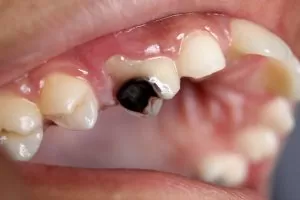
Are you ready to set sail on a journey toward a cavity-free mouth? Cavities may be a common dental problem, but they’re like scurvy on a ship – they can cause a lot of trouble if left unchecked!
But fear not, because, with a few simple tips and tricks, you can keep your pearly whites shining bright and away from those pesky cavities. So buckle up and let’s explore the high seas of dental hygiene together!
Regular Brushing And Flossing
Regular brushing and flossing are two of the most important things you can do to prevent cavities. Here are some tips to help you use these techniques effectively:
Brushing
- Use a soft-bristled brush: Hard-bristled brushes can damage your gums and tooth enamel.
- Brush at a 45-degree angle: Angle your brush at a 45-degree angle towards your gumline and use gentle circular motions.
- Brush all surfaces of your teeth: Don’t forget to brush the fronts, backs, and chewing surfaces of your teeth.
- Brush your tongue: Bacteria can accumulate on your tongue and cause bad breath and cavities, so make sure to brush your tongue or use a tongue scraper.
Flossing
- Use enough floss: Use about 18 inches of floss and wrap it around your fingers, leaving a few inches in between.
- Be gentle: Gently glide the floss between your teeth, using a back-and-forth motion. Avoid snapping the floss, which can damage your gums.
- Curve the floss: Curve the floss around each tooth in a “C” shape and slide it under the gumline.
- Use clean sections of floss: After flossing a tooth, use a clean section of floss for the next tooth.
By incorporating these techniques into your daily routine, you can effectively remove plaque and bacteria from your teeth and gums, which will help prevent cavities and maintain good oral health.
Try The Application Of Dental Sealants
Dental sealants are a preventive treatment that can help protect your teeth from cavities. They are thin, plastic coatings that are applied to the chewing surfaces of your back teeth.
Dental sealants create a barrier that seals out food particles and bacteria, reducing your risk of developing cavities. While dental sealants are most commonly recommended for children and teenagers, adults with deep grooves or pits on their back teeth may also benefit from them.
The process of applying dental sealants is quick and painless. Your dentist will clean and dry your teeth, apply an acid solution to create a rough surface, and then paint on the sealant material.
A special light is used to harden the sealant, creating a strong bond to the tooth. Once the sealant is applied, you can resume your normal activities and enjoy the peace of mind that comes with knowing your teeth are protected.
Dental sealants can last up to 10 years with proper care. Your dentist will check them at your regular checkups and may recommend touch-ups as needed.
By considering dental sealants, you can take a proactive approach to preventing cavities and maintaining good oral health. Talk to your dentist to see if dental sealants are right for you or your child. They may be just the thing you need to keep your teeth healthy and cavity-free.
Fluoride Treatments
Fluoride treatments are a simple and effective way to prevent cavities. Fluoride is a natural mineral that helps to strengthen tooth enamel and protect against decay.
However, for those who are at high risk of developing cavities, such as people with a history of dental decay, those with orthodontic appliances, or those with dry mouths due to certain medications or medical conditions, additional fluoride treatments may be necessary.
Fluoride treatments are a quick and painless way to apply a concentrated dose of fluoride directly to your teeth. Your dentist may apply a fluoride gel or varnish to your teeth using a brush, swab, or tray.
The fluoride is then left on your teeth for a few minutes to allow it to penetrate the enamel and strengthen your teeth. With regular fluoride treatments, you can help prevent cavities and maintain strong, healthy teeth.
The frequency of fluoride treatments depends on your individual needs and risk factors. Your dentist may recommend fluoride treatments every 3, 6, or 12 months, or as needed based on your oral health. By discussing your individual needs with your dentist, you can determine the best schedule for your fluoride treatments.
Fluoride treatments, combined with good oral hygiene practices such as regular brushing and flossing, can help keep your teeth strong and cavity-free for years to come. Don’t let cavities ruin your smile – talk to your dentist about the benefits of fluoride treatments today. Visit our clinic now!